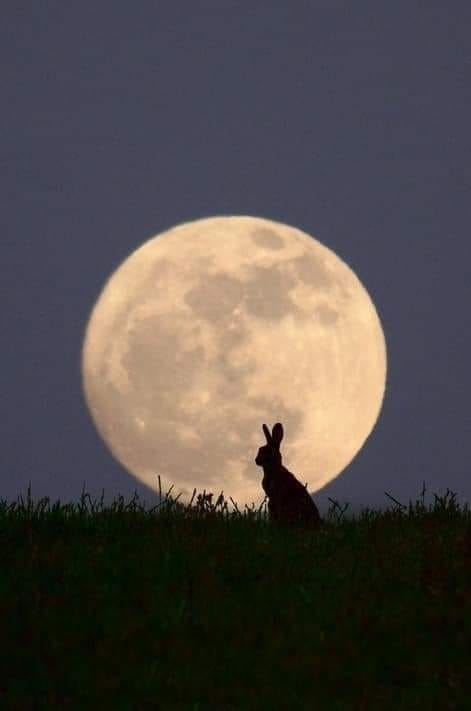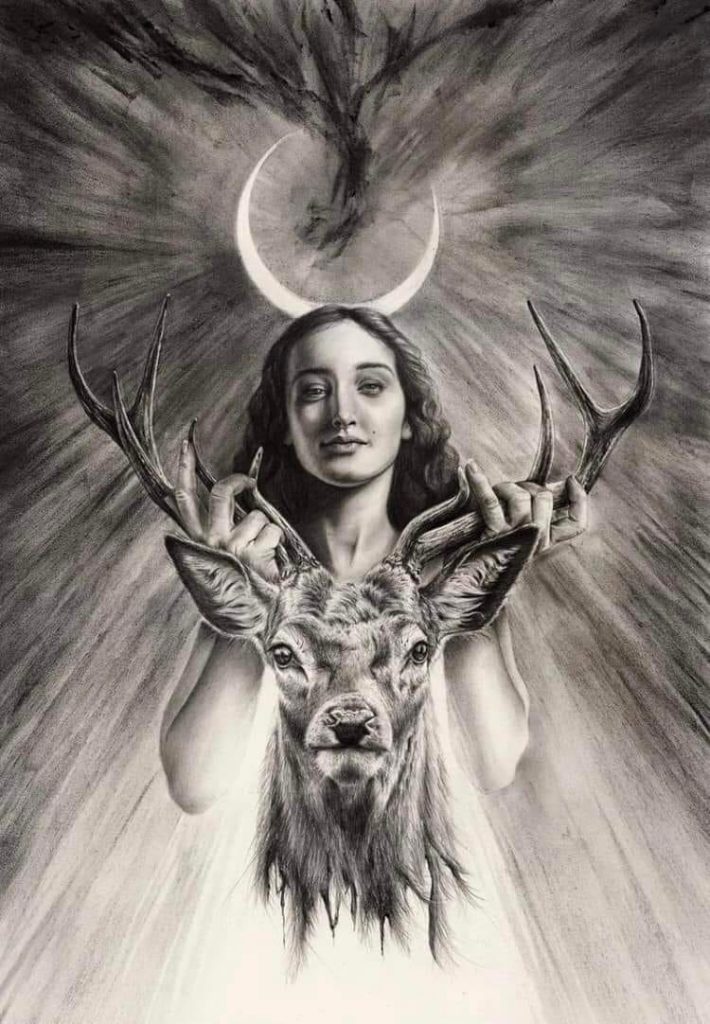The following animals all have magickal qualities that can be harnessed in times of need.
Choose an animal to work with that best represents a personality characteristic you would like to develop or improve.
Bear (introspection, stability, wisdom)
The strength of the bear lies in its ability to enter into a state of hibernation.
In this state it is able to digest the year’s experience.
The bear gains wisdom through sleep in dream time.
When warmth and sunlight return, the bear emerges strong, stable, and with renewed vitality.
Bear is strongly protective of home and family.
Bear Associations.
Direction: North Element: Earth Deities: Artemis, Diana, Thor, Cernunnos.
The bear will teach you great wisdom.
He will also teach you the value of stillness and introspection.
When you feel the need for stability, call on the bear during meditation.
Ask the bear to bring you wisdom.
Buffalo (abundance, prayer, thanksgiving)
The buffalo was the major source of food for the Plains Indians.
The buffalo provided meat, hide for clothing, and hooves for glue.
The buffalo was considered sacred in many traditions because it represented the ideal that when all was in balance there was great abundance.
When there was abundance, prayer and thanksgiving were offered in gratitude.
Buffalo Associations.
Direction: North and South Elements: Earth and Fire Deities: Apis, Cernunnos, Jupiter, Thor, Zeus.
When you feel out of synch with those around you or your environment, ask the buffalo for help.
Work with the buffalo during meditation.
When you feel the need to pray or give thanks for blessings received, ask the buffalo to help you express your emotions in a proper manner.
Cat (independence, secrets)
The cat is very independent, a mighty hunter, and has many secrets.
The cat was worshiped by the Egyptians because of its cunning and ability to purge the house of undesirable elements.
Bast, the cat-headed goddess, was considered to be a great protector of women. In ancient Rome, the cat was a symbol of freedom.
The cat is known for hiding and being secretive.
Cat Associations
Direction: North and South Elements: Earth and Fire Deities: Bast, Brighid, Hathor, Isis, Maat, Osiris, Ra
If there is something you need to find out about yourself or others, ask the cat for help during meditation.
If you feel overburdened and feel the need for more for independence, invite the cat into your dreams.
Dog (friendship, loyalty)
Dogs have long been considered man’s best friend.
The dog is loyal to a fault, content with the bare necessities of life, and, like the wolf, protective of home and family.
For thousands of years, dogs have been honored for their loyalty. Hermes (Mercury) was frequently accompanied by his faithful dog.
Argos, Odysseus’s dog, was the only one to recognize him when he returned from the Trojan War.
Dogs have a keen sense of smell, hearing, and sight. It is said they can sense evil and death approaching.
Dog Associations Direction: North Elements: Earth Deities: Odin, Lugh, Demeter, Mercury/Hermes, Ishtar
Use the dog when you feel the need for support from your friends, or when you feel loyalties are divided.
During meditation ask the dog to protect you from the negative thoughts and vibrations others send your way.
Eagle (spirit, connection to the Divine)
The eagle is believed to be the messenger or connection between humans and the divine.
The eagle has the ability to live in the realm of the spirit and yet remain connected to the Earth and its inhabitants.
The eagle represents the grace that is achieved through hard work.
The eagle teaches humans how to have the courage and learn from the lows in life as well as the highs.
Eagle Associations Direction: East Element: Air Deities: Zeus, Indra, Jupiter, Mithras, Apollo
When you need help with spiritual development ask the eagle for help.
In meditation merge with the eagle for help with rising above material desires. Ask the eagle to enter your dreams and impart knowledge of about the Ancient Ones.
Elephant (wisdom, stability)
The elephant has always been revered for its size, intelligence, and devotion to family.
The Greek philosopher Aristotle admired the elephant for its great wisdom and intelligence.
In Hinduism, the elephant-headed god Ganesha is invoked before any undertaking for his wisdom.
Ganesha is said to bring stability and abundance to shop owners.
Elephant Associations Direction: North Element: Earth Deities: Ganesh, Indra, Siva
If you’re having problems making decisions, work with the elephant for wisdom and stability.
If you’re considering starting a business or need to attract more customers to your present business, ask the elephant-headed god Ganesha for help.
Horse (swift action, power)
The horse has long been a symbol of swiftness and power.
In ancient mythology it is the horse that bears the heroes and the gods across the earth, and even across the sky, at great speed.
The horse is physical power and unearthly power. In shamanic practices, the horse enables the shaman to fly through the air to reach the heavens or spirit realm.
The horse is able to carry great burdens for long distances with ease.
Horse Associations Direction: North, East, South, West Element: Earth, Air, Fire, Water Deities: Epona, Helios, Brighid, Apollo, Godiva, Mars, Artemis
When you need to respond swiftly to a situation, call on the horse.
If you need more personal power, or are overburdened by too much work, ask the horse to give you strength.
Owl (clairvoyance, magick, astral projection)
The owl has been called the night eagle because of its connection to the world of spirit.
The owl hunts at night.
The owl can see in the dark and pinpoint prey by sound.
Humans may be afraid of the dark, but night is owl’s friend.
The owl is silent; you can’t hear it when it flies.
The owl has often been associated with the Witch because of its connection to the night.
Owl Associations Direction: East Element: Air Deities: Athena, Lilith, Hecate, Bloeuweed, Isis, Minerva
During meditation, ask the owl to help you unveil the truth and see things clearly.
The owl can also help you learn to interpret omens and intuit dreams. Before doing any kind of divination, ask the owl to be present and help you interpret things correctly.
Wolf (power, protection, psychic development)
Wolves howl at the moon, they mate openly, and walk silently through the woods.
The wolf lives by instinct.
The wolf is the pathfinder, the discoverer of new ideas who returns to his family to teach them the ways of the world.
The Wolf has keen senses, works with the power of the moon, and is a symbol of psychic energy
Wolf Associations Direction: North Element: Earth Deities: Loki, Odin, Diana, Artemis, Brighid, the Morrigan
When you are in need of more personal power or psychic energy call on the wolf.
The wolf will take you to his private den and teach you how to walk silently and work with the power of the moon to build psychic skills.


